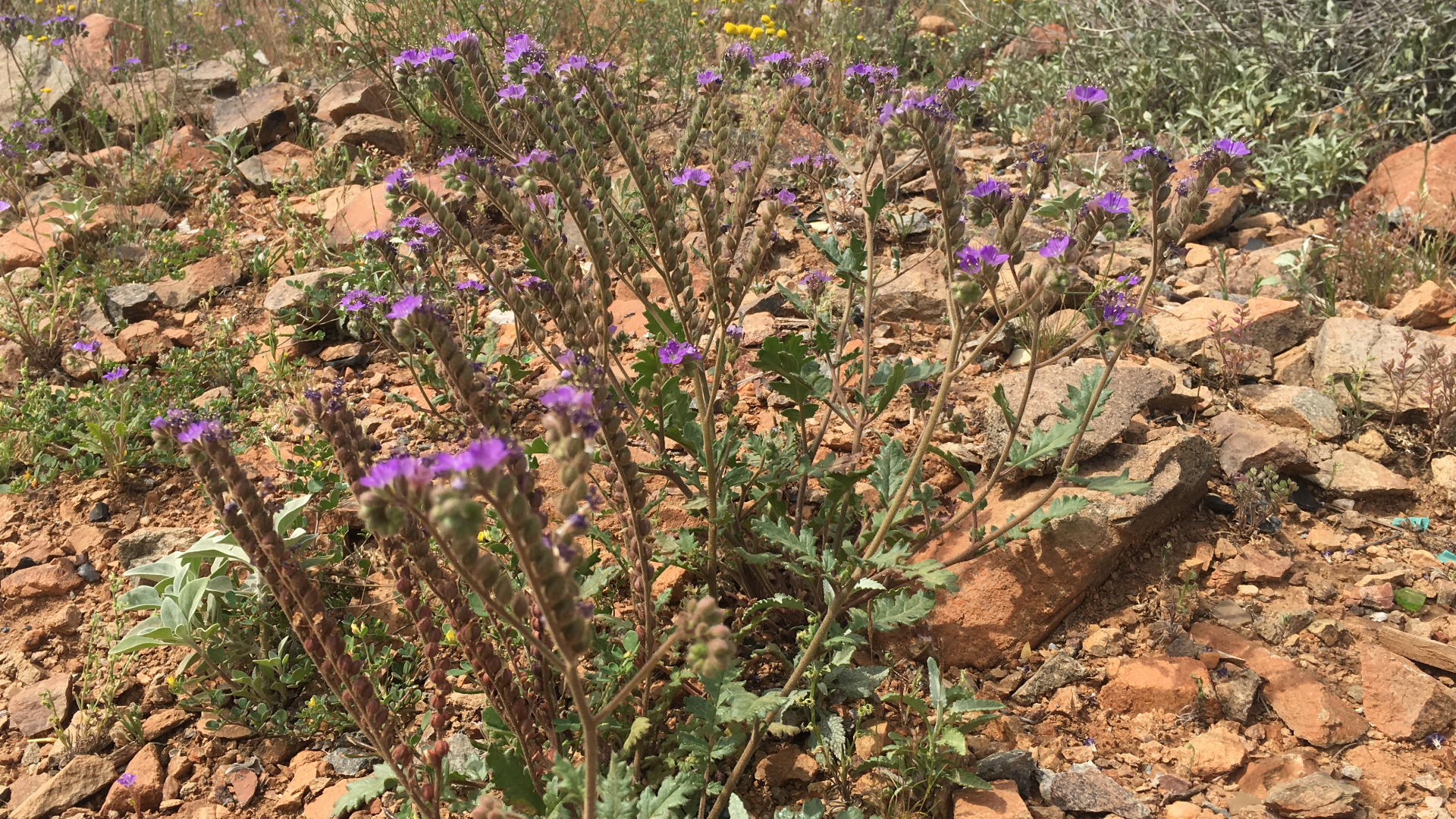PHOENIX — Spring is here, and thanks to a particularly wet winter, the desert landscape at Phoenix Sonoran Desert Preserve has a little extra color.
But one wildflower serves as a reminder that it is best to enjoy the flowers without touching them: the scorpion weed.
It’s an unassuming, pretty little plant with purple flowers. The name comes from the way the stems curl like a scorpion's tail.
But the stems and seed pods of the flower are covered in numerous hairs, which contain oil that irritate the skin, according to the U.S. Department of Agriculture. The resulting rash is similar to the effects of poison oak or poison ivy.
The rash from the oil usually lasts several days and can stick around for more than a week, and if you give in to the urge to scratch, that will only spread the oil, exacerbating the irritation.
If you come in contact with scorpion weed, you should immediately rinse your skin with lukewarm, soapy water and wash your clothes, as the oil can stick to clothing too, according to the American Academy of Dermatology.
The oil can also stick to other surfaces, like leashes or a pet's fur, so be sure to give your pets a warm soapy bath as well if you come across scorpion weed during a walk.
To relieve the itching, the AAD recommends calamine lotion, hydrocortisone cream and applying cool compresses to the rash.
Scorpion weed is found in sandy or gravelly soil and is common around dry washes and slopes along roads. At the Phoenix Sonoran Preserve, there’s plenty of it along the hiking trails.
The plant has a strong, onion-like smell, according to the National Park Service, yet another warning from the scorpion weed to stay away.

